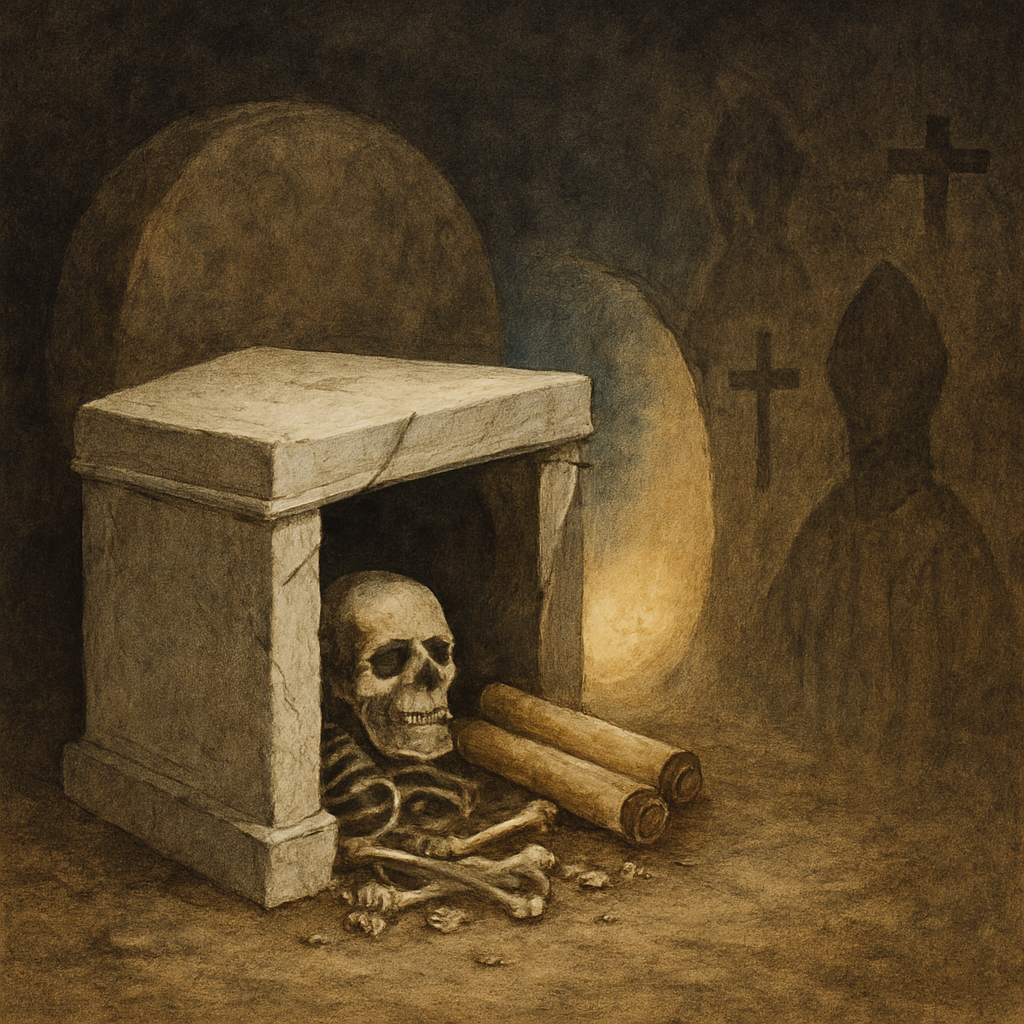In 1990, I had the pleasure of hearing Dr. Jensen explain the meaning of the parable of the Resurrection. Central to understanding it in fullness was his explanation of the “whitewashed tombs filled with dead men’s bones.” I’ve decided to resurrect this critical teaching of Dr. Jensen’s for your edification and for posterity.
DEAD MEN’S BONES
The four Gospel accounts of the resurrection disagree on every fact, except that the stone was rolled away from the empty tomb on the first day of the week (Matthew 28; Mark 16; Luke 24; John 20). They disagree on the number of women and the time of day they went to the tomb, which disciples went to the tomb, and the number of angels that were there. In John 20:17, Jesus forbade Mary to touch Him because He had not yet ascended to the Father; whereas, in Matthew 28:9, the women grabbed His feet. Besides, Friday, while on the cross, Jesus said He would be in paradise that day; not after Sunday (Luke 23:43). Also, why would Mary turn her back on Jesus after she discovered that he had resurrected (John 20:14,16)? Perhaps “one good turn just deserved another” (Luke 22.32). And so on–the accounts disagree.

The resurrection was the only sign Jesus gave to prove He was the prophesied Christ (Matthew 12:39). Therefore, it is unlikely that the Gospel authors would disagree on every single fact in their recording of the most important event in history. If they were indeed confused over the facts, then the authenticity of the New Testament is in serious question. An alternative explanation is that the authors were not recording historical facts at all. Instead, they were recording a parable as Jesus had taught (Mark 4:11,12,33,34). If not, then Jesus must have lied about speaking everything in parables, and the apostles must have been confused or invented the facts. How would you judge–parables, or lies and confusion?
The parable of “the stone rolled away from the tomb” symbolizes Jesus’ “title of Christ (the stone) being removed from the teachings of the corrupt Christian clergy (the tomb).” Jesus said the clergymen were “whitewashed tombs… full of dead men’s bones” (Matthew 23:27). The whitewashed tombs are the Christian clergy’s pagan dogmas, which outwardly, have the form of a religion based upon Jesus’ Words (I Timothy 3:5); but, inwardly, they are full of dead men’s bones.
Jesus said that “flesh and bones” symbolize the “words,” which are spirit and life (John 6:63; Luke 24:39). The “dead men’s bones” are therefore the “dead men’s words” taught by the Christian clergymen. These dead men’s words are the man-made trinitarian and god-incarnate mythologies, which occur nowhere in the Bible (Rock Of Ages, Missoulian, informative ad, July 19, 1986, p. 12). Paul warned against the deception by these man-made mythologies (Colossians 2:8; 1 Timothy 4:7; 2 Timothy 4:4). These pagan dogmas have no spiritual essence; no life; they are dead men’s bones.
In Jesus’ parables, the clergy class are referred to as “Scribes and Pharisees.” Today, Jesus would have used the contemporary terms of pope, bishop, pastor, evangelist, father (see Matthew 23:9), and so on. Nonetheless, clergy, by any other name, is still clergy, and not a rose.
The stone rolled away from the tomb is the “stone that the builders rejected” (Matthew 21:42; Stone the Builders Rejected, Missoulian, informative ad, July 26, 1986, p. 4). Throughout the Bible the “stone” and “rock” represent Jesus’ “title of Christ” (I Corinthians 10:4; 1 Peter 2:7,8). The Christian clergy rejected Jesus’ title of Christ with their trinitarian lie, which makes God the literal father of Jesus, and rejects Joseph as the true father (The Antichrists Do Not Receive the Second Christ, Missoulian, informative ad, July 12, 1986, p. 4). The “stone” is the “key of knowledge” to understanding Jesus’ Gospel of the kingdom of God (Matthew 16:19). The corrupt Christian clergy have taken away this key of knowledge (Luke 11:52), and shut their deceived followers out of the kingdom of God (Matthew 23:13). Thus, the stone (the key to understanding Jesus’ title of Christ) has been rolled away from the tomb (the Christian clergies’ teachings).
Christ’s resurrection is a parable of the “resurrection of Jesus’ Gospel;” not His physical body (Three Days Three Nights, Missoulian, informative ad, August 16, 1986, p.4). Baha’u’llah, (“The Glory of the Father” in the Aramaic language of Jesus; Mark 8:38; Romans 6:4) resurrected the meaning of Jesus’ Gospel of the kingdom of God on earth (Did You Know That The Second Christ Has Come?, June 27, 1986, p. 10).
If you would like an even deeper dive into understanding the parable of the resurrection, please visit the School of the Land. Enrollment is free. This education is not available at any university on the planet, other than today’s modern Bet Midrash (Melchizedek’s House of Learning). Godspeed!
